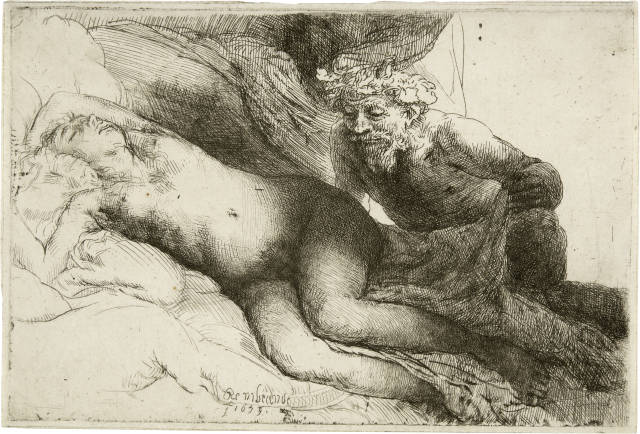- EN
Log in
- Live Auctions
- Online Only
- Past auctions
- Gallery
- Art Dealing
- Publishing
- Kornfeld today
- The Story of Kornfeld
- Information



Leiden 1606 - 1669 Amsterdam
1659
Etching, engraving and drypoint on laid paper
14.3x20.9 cm, sheet size
The New Hollstein (Hinterding/Rutgers) 311/II (of III)
White/Boon 203/I (of II)
Collection Johann Carl Diedrich Hebich (1818-1891), Hamburg, Lugt 1250
Auction H. G. Gutekunst, Stuttgart, 1880, lot 253
Collection Baron Adalbert von Lanna (1836-1909), Prague, Lugt 2773
Auction H. G. Gutekunst, Stuttgart, 1909, lot 2645
Max Hausdorff Collection, North Germany, Lugt 4071
Auction Amsler & Ruthardt, Berlin, 1924, lot 204
Collection Alfred Stroelin (1871-1955), Lausanne, without stamp
German private collection
Swiss private collection
Hans Wolfgang Singer, Lanna Collection Prague, The Print Room, Scientific Catalogue by Dr Hans Wolfgang Singer, 2nd vol., Prague 1895, no. 7968
Very good impression of this extremely rare sheet. Nowell-Usticke describes it as "RRRR-". Before the later inscription upper right. The I state newly described by Hinterding, before the cross position on the cover held by Jupiter, exists only in a single proof in London retouched with the pen. Quite excellently and untouched preserved. With narrow margins on all sides
In the early catalogues of Rembrandt's prints, the subject was described as Venus with a Satyr before it was recognised as "Jupiter and Antiope". Accordingly, Jupiter approaches the sleeping king's daughter Antiope of Thebes in the form of a satyr. The subject was treated in many ways in 16th- and 17th-century painting and prints, and Rembrandt himself had already etched the subject for the first time around 1631 at the end of his Leiden period. For the later sheet, Rembrandt was inspired by an engraving by Annibale Carracci (see lot 2087). For the antiope's arm placed behind her head - in ancient art this is the artistic formula for expressing sleep - Rembrandt referred to other Italian models, which also demonstrates his knowledge of Italian art. In 1731, Valerius Röver therefore described the etching as "de Nimph, (en de) satyr op zijn Italiaansch geetst" (The Nymph and the Satyr etched in the Italian style).
This rare and sought-after print is one of the last etchings created by Rembrandt.
1659
Radierung, Kupferstich und Kaltnadel auf Bütten
14,3x20,9 cm, Blattgrösse
The New Hollstein (Hinterding/Rutgers) 311/II (v. III)
White/Boon 203/I (v. II)
Slg. Johann Carl Diedrich Hebich (1818–1891), Hamburg, Lugt 1250
Auktion H. G. Gutekunst, Stuttgart, 1880, Los 253
Slg. Freiherr Adalbert von Lanna (1836-1909), Prag, Lugt 2773
Auktion H. G. Gutekunst, Stuttgart, 1909, Los 2645
Slg. Max Hausdorff, Norddeutschland, Lugt 4071
Auktion Amsler & Ruthardt, Berlin, 1924, Los 204
Slg. Alfred Stroelin (1871-1955), Lausanne, ohne Stempel
Deutsche Privatsammlung
Schweizer Privatsammlung
Hans Wolfgang Singer, Sammlung Lanna Prag, Das Kupferstichkabinett, Wissenschaftliches Verzeichnis von Dr. Hans Wolfgang Singer, 2. Band, Prag 1895,
Sehr guter Abzug dieses höchst seltenen Blattes. Nowell-Usticke beschreibt es als "RRRR-". Vor der späteren Inschrift rechts oben. Der von Hinterding neu beschriebene I. Zustand, vor der Kreuzlage auf der von Jupiter gehaltenen Decke, existiert nur in einem einzigen, mit der Feder retuschierten Probedruck in London. Ganz ausgezeichnet und unberührt erhalten. Umlaufend mit schmalem Rand
In den frühen Verzeichnissen zur Graphik Rembrandts wurde das Thema als Venus mit einem Satyr beschrieben, ehe es als "Jupiter und Antiope" erkannt wurde. Demnach nähert sich Jupiter der schlafenden Königstochter Antiope von Theben in Gestalt eines Satyrs. In der Malerei und der Druckgraphik des 16. und 17. Jahrhunderts fand das Thema vielfache Behandlung, und Rembrandt selbst hatte um 1631 das Sujet erstmals bereits am Ende seiner Leidener Zeit radiert. Für das spätere Blatt liess sich Rembrandt von einem Kupferstich Annibale Carraccis inspirieren (vgl. unser Los 2087). Für den hinter den Kopf gelegten Arm der Antiope – in der antiken Kunst ist dies die künstlerische Formel, Schlaf auszudrücken – bezog sich Rembrandt auf weitere italienische Vorbilder, was auch seine Kenntnis italienischer Kunst unter Beweis stellte. 1731 beschrieb Valerius Röver die Radierung daher mit dem Hinweis: "de Nimph, (en de) satyr op zijn Italiaansch geetst" (Die Nymphe und der Satyr im italienischen Stil geätzt).
Das seltene und gesuchte Blatt ist eine der letzten von Rembrandt geschaffenen Radierungen.
| Switzerland | CHF | 130 |
| Europe | CHF | 200 |
| Overseas | CHF | 250 |




